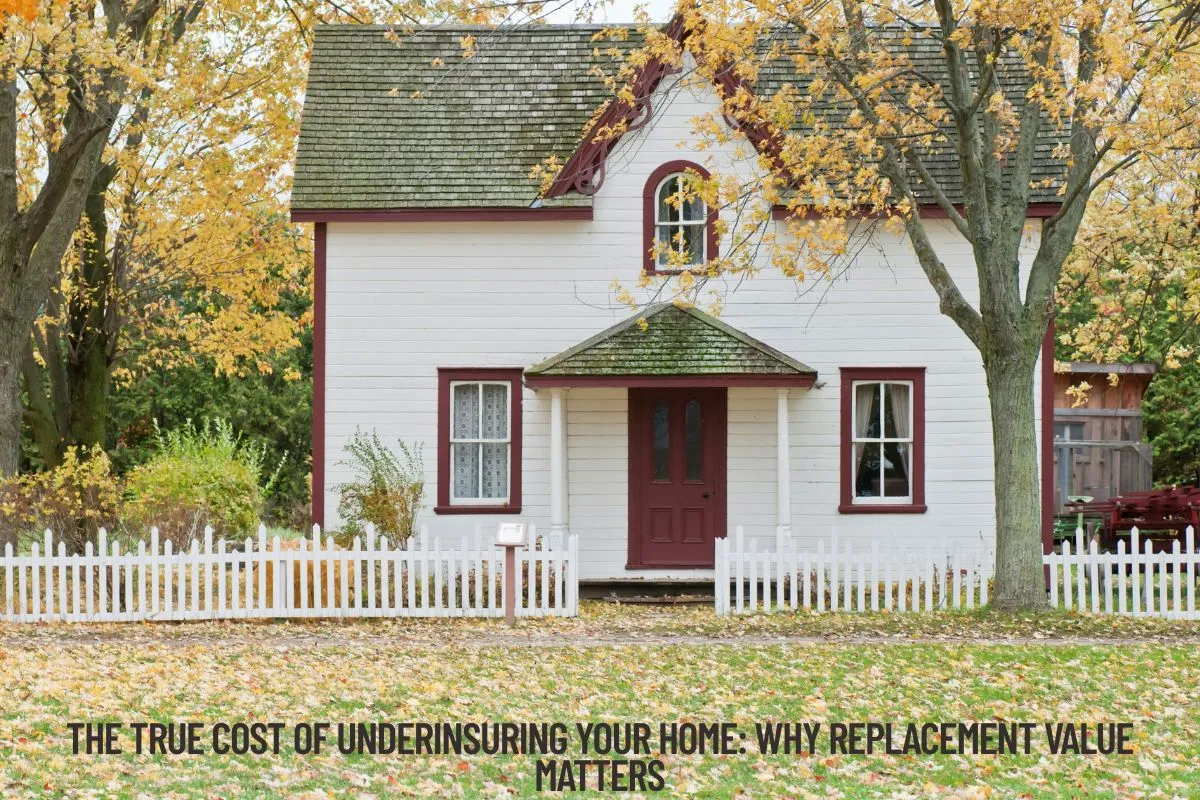For most homeowners, buying insurance feels like checking off a box on the to-do list. After all, once the mortgage lender approves the policy, everything feels “good enough,” right?
But what happens if a fire levels your house and the payout barely covers half the cost to rebuild? This isn’t rare—it happens to thousands of families every year.
Recent surveys show nearly two out of three homes in the U.S. are underinsured. That means families could be facing devastating financial gaps after storms, fires, or other disasters.
Home insurance isn’t just about meeting minimum requirements. The goal is to protect your largest investment so you can recover fully if the unthinkable happens. And that’s where replacement value comes in.
What Replacement Value Means (and Why Actual Cash Value Falls Short)
Home policies often use one of two methods to calculate payouts:
| Method | What It Covers | Outcome After a Loss |
| Actual Cash Value (ACV) | Covers your home’s value minus depreciation. Think “garage sale prices” for everything you own. | Lower payout that may not cover full rebuild costs. |
| Replacement Cost Value (RCV) | Covers the cost to rebuild your home with today’s labor and materials, without factoring depreciation. | Full payout to restore your home to its original state. |
Imagine a roof destroyed in a storm. With ACV, the payout accounts for years of wear and tear, leaving you short on funds. With RCV, the payout reflects what it would cost to install a brand-new roof today.
Here’s a simple comparison:
- A family’s 15-year-old roof costs $20,000 to replace.
- ACV pays $7,500 after deducting for depreciation.
- RCV pays the full $20,000—enough to restore the home completely.
Choosing ACV might save a few dollars on premiums, but it often leads to far greater expenses after a disaster.
Why Underinsuring Happens More Than You Think
You may be wondering why underinsurance is so common. It usually comes down to three factors:
Outdated Coverage Limits
Many homeowners buy a policy and never update it. Meanwhile, construction costs rise, and home improvements add value that isn’t reflected in the original coverage.
Focus on Price Over Value
It’s tempting to grab the lowest premium, but cheap policies often cut corners, using ACV or capping replacement costs.
Assuming “It’ll Never Happen Here”
Until a disaster strikes nearby, most people don’t imagine their home could be completely destroyed.
Case in Point:
A couple in Kingwood, Texas reviewed their policy after seeing neighbors lose their homes in a flood. Their original coverage left a $90,000 gap between the insured amount and the true rebuild cost. After shopping around, they managed to get an affordable home insurance in Kingwood that included full replacement coverage—without straining their budget.
Stories like this illustrate why periodic policy reviews are far from optional.
Signs Your Policy May Leave You Vulnerable
Before a disaster exposes gaps in your coverage, check your policy for these warning signs:
- Coverage limits that haven’t changed in five years or more.
- Policy lists ACV rather than RCV.
- Home improvements (additions, remodels, etc.) not reported to your agent.
- No inflation guard endorsement to adjust for rising costs.
- Exclusions for common local risks (like windstorms or flooding).
Think of this as a quick self-audit. If any of these apply, it may be time to speak with an independent agent about stronger protection.
How to Avoid the Financial Pitfall of Underinsurance
It’s easier to prevent coverage gaps than to fix them after a disaster. These steps can help you take control of your protection and avoid unwelcome surprises.
- Request a Replacement Cost Estimate From Your Agent
Your insurer can calculate what it would take to rebuild your home from the ground up using current material and labor costs. This number often differs significantly from your home’s market value.
- Update Coverage After Renovations or Upgrades
Added a new kitchen, finished the basement, or replaced flooring? These changes increase the cost to rebuild. Notify your agent immediately so your policy reflects the updated value.
- Add Inflation Protection
Inflation riders automatically adjust your coverage limits each year to keep up with rising costs. Without it, you may fall behind even if you started with the right amount of insurance.
- Review Deductibles and Exclusions
High deductibles or exclusions for risks like wind damage or earthquakes can expose you to large out-of-pocket costs. Independent agents can often find competitive policies that fill these gaps.
Real-World Costs: Why Cutting Corners Backfires
Homeowners who opt for bare-minimum policies to save a few hundred dollars often face repair bills in the tens of thousands later. Consider these examples:
- 2017 wildfire victims in California: Nearly 60% discovered they were underinsured by at least 20% after losing their homes.
- Hurricane survivors in the Gulf Coast: Many were left paying for repairs themselves when outdated policies covered only half the actual rebuild cost.
Even in areas considered “low risk,” house fires, burst pipes, and freak weather events can leave you vulnerable.
Why Independent Agencies Make a Difference
Choosing the right policy isn’t easy to do alone. That’s where independent agents come in. Unlike “captive” agents tied to one company, independent agencies work with multiple insurers to compare options and find coverage that fits your home and your budget.
For example: A homeowner in Kingwood, Texas, compared rates from several carriers through an independent agency. Instead of overpaying for full replacement coverage, they found a balance—getting an affordable home insurance in Kingwood with replacement cost protection included.
This approach isn’t just for Texas residents; it benefits homeowners across the country looking for value and peace of mind.
Key Takeaways: Protecting Your Home Without Overpaying
- Actual cash value policies pay out far less than you might expect.
- Replacement cost value covers rebuilding at today’s prices—don’t settle for less.
- Review your policy regularly, especially after major life or home changes.
- Inflation and rising construction costs can leave you exposed without adjustments.
- Independent agents are your best ally for finding comprehensive, affordable coverage.
Don’t Wait for a Wake-Up Call
The financial gap created by underinsurance can be devastating—and preventable. Take a few minutes today to look over your policy and ask tough questions about what would happen if your home were a total loss.
If there’s any doubt, reach out to an independent agency to discuss options. Peace of mind comes from knowing your home is fully protected—not from hoping disaster never strikes.










